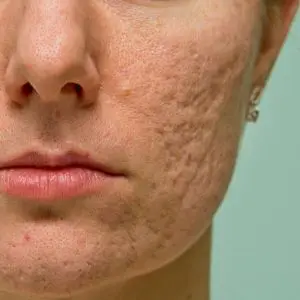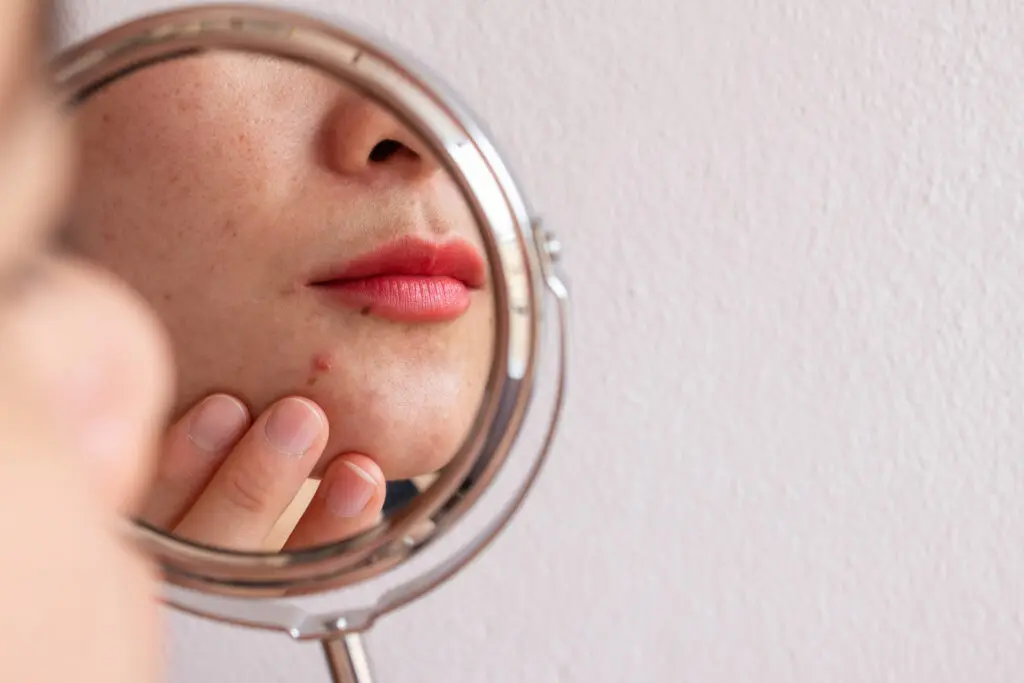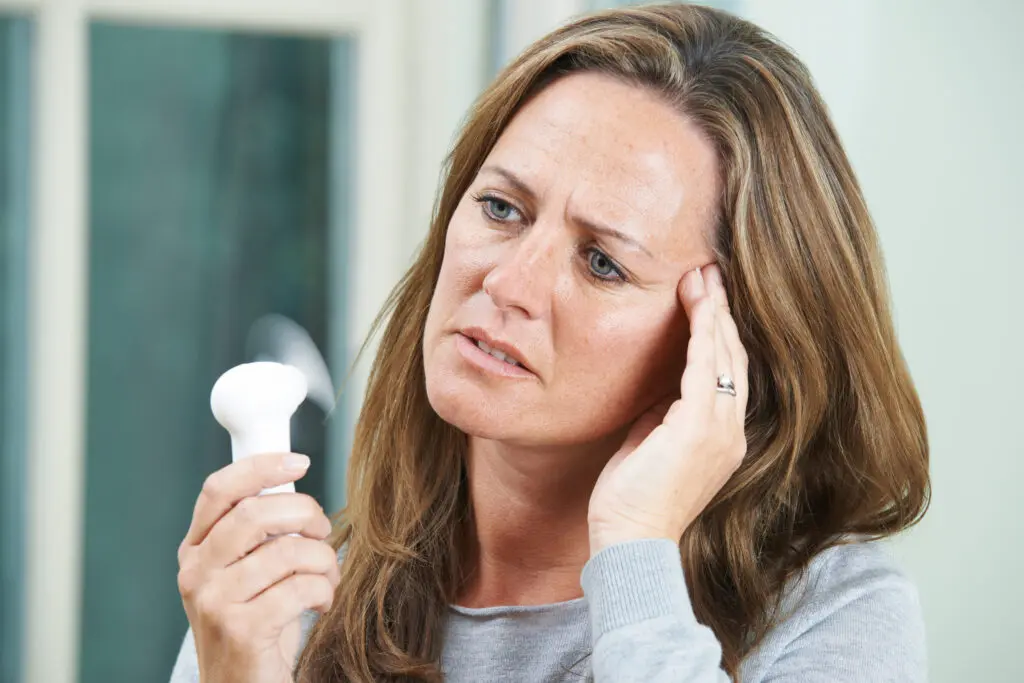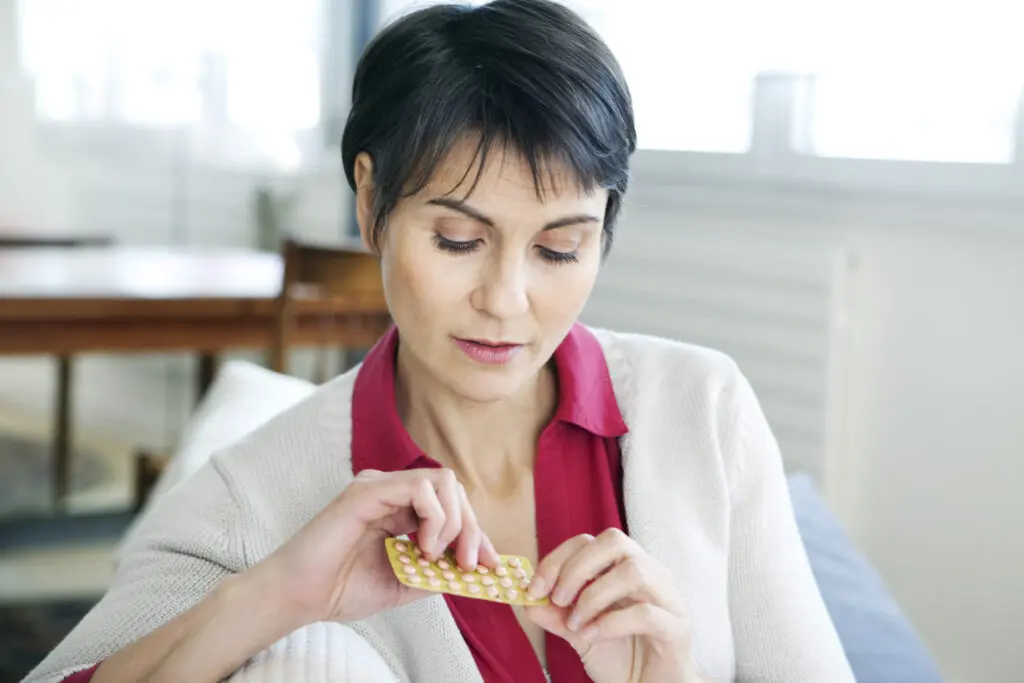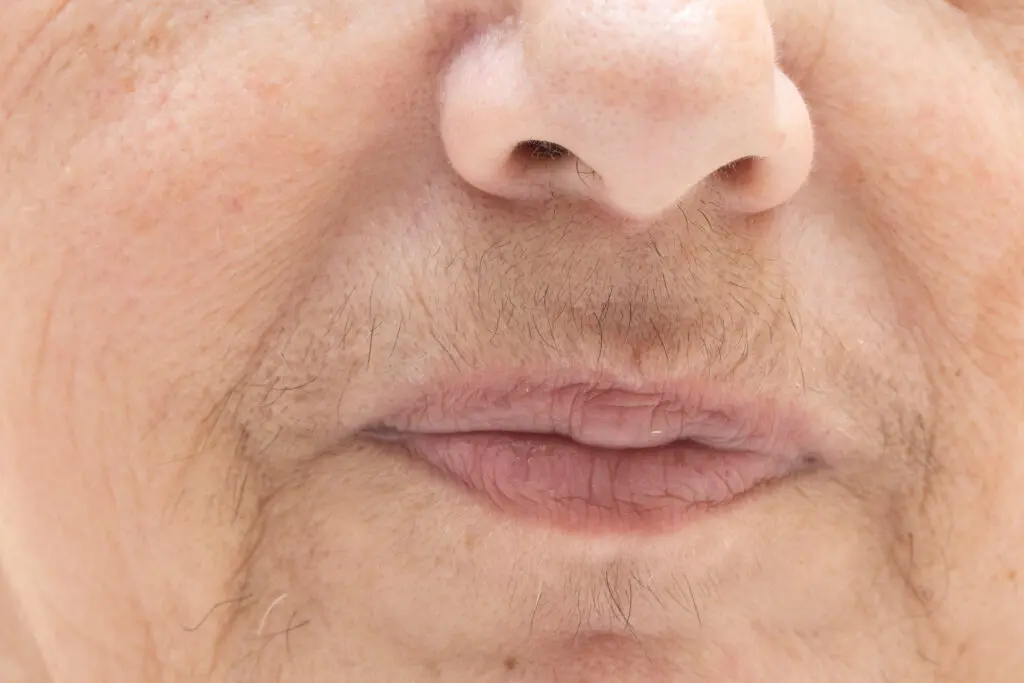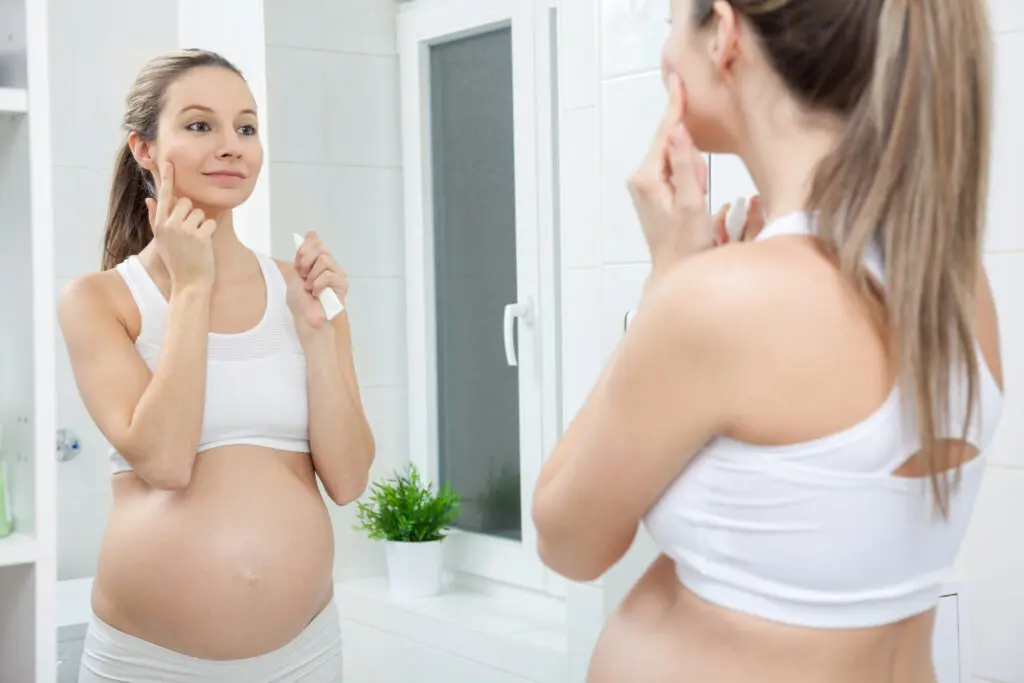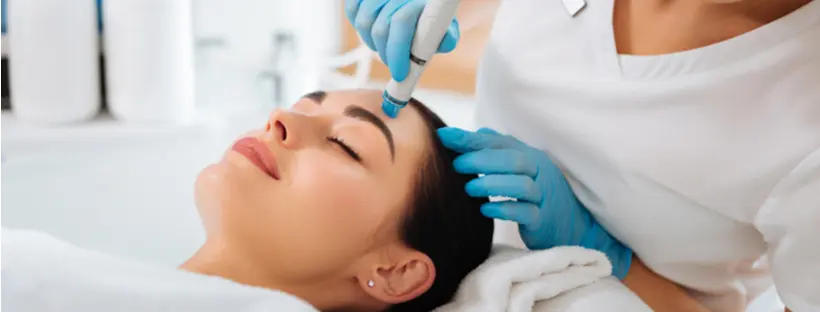Feeling stressed and under pressure is unfortunately a common occurrence in most people’s lives. Being overwhelmed by stress can lead to problems with our skin and de-stressing your skin can be challenging.
Dr Daron Seukeran, Group Medical Director here at sk:n, explains why our skin is affected by stress and how we can try to de-stress our skin.
“In stressful situations, the body produces hormones such as adrenalin and cortisol, as well as proteins such as endorphins, insulin and ones that trigger inflammation. We know that this can have an impact on certain skin conditions.
“Psoriasis, rosacea and eczema are conditions known to become worse when individuals are going through stressful circumstances, which in turn can have a psychological and social confidence impact too. Although there is not a huge amount of clinical evidence, many people also feel that their acne gets worse during stressful times. Stress can also initiate oxidative stress which can damage cell and DNA, leading to premature ageing.
“Worsening skin conditions such as these can negatively influence how you feel about yourself and, the unrealistic social standards and pressures on social media, which can also contribute. This can lead to lack of self-confidence, and low self-esteem, social isolation and an increase in stress – creating a vicious cycle.”
Depending on your skin concern and the severity of the condition, there are a number of treatments that may help, including chemical peels, hydrafacial, IPL and anti-ageing injectables, or booking a dermatology consultation.
There are some surprising tips on how to keep stressful skin flare-ups at bay:
1. Eat more…. carrots
We have always been told that eating carrots is great for our vision, however, a lesser-known fact is the great benefits for our skin. Carrots provide a vital source of vitamin A, which is helpful for any healthy skin diet. They also contain biotin, vitamins K, C and B6, potassium and thiamine, all of which can help skin cells stay healthy. Many people find cooking is a great way to relax, so when you’re next in the kitchen, try whipping up a carrot-centric dish to double the benefits!
2. Try knitting
Knitting has been found to reduce depression and anxiety. Its repetitive movements can elicit a relaxation response, which is the body’s counterbalance to stress, when your heart rate and blood pressure fall, breathing slows, and levels of stress hormones drop. This can reduce inflammation of the skin, often triggered by stress. If picking up the needles isn’t for you, try other relaxation and mindfulness techniques, such as writing or painting, meditation or yoga. Talking about any pressures or stresses with family and friends can also help you to relax.
3. Get moving
Exercise can help to de-stress your skin by increasing levels of beta-endorphins, which fight the effects of cortisol. It can also boost energy levels and the immune system, in turn helping to improve eczema and psoriasis symptoms. However, always ensure you adapt your workout appropriately for your skin needs – for instance, if you are having a flare-up, opt for low-impact workouts and wear loose clothing to help reduce irritation to the skin.
Regular exercise also helps to delay the ageing process by increasing a particular organelle in our cells, called the mitochondria, which plays an important protective role in cellular ageing.
It also has positive effects on our skin’s thickness and elasticity – regardless of whether you’re an exercise novice or it has been part of your daily routine for years. To allow this natural process to fully work, it’s important to make sure that you cleanse your skin after your workout – simply wiping your face with a towel just won’t cut it. If you don’t, the dirt that has been released from your pores will still be sitting on the surface of the skin and will simply settle back into your pores again.
4. Choose makeup carefully
It’s tempting to use more cosmetics to cover up irritated skin and breakouts, especially if you are already feeling stressed out by these conditions. However, applying makeup can clog pores and further trigger inflammation. An alternative is choosing to wear mineral-based makeup, which essentially means its formula is made up of natural ingredients, however, this doesn’t mean it won’t irritate your skin, so when using any new products, test it on an inconspicuous area of your skin.
Going cold turkey isn’t always a realistic option for some people but be aware that sometimes makeup can make your skin worse due to an allergic or irritant effect. If you’re not confident, you don’t have to forego using makeup altogether, but perhaps applying a little less than you usually would, especially when it comes to foundation, as this is often the biggest culprit of clogging your pores if not removed correctly.
5. Light therapy
One way of treating acne or, rosacea or redness is through light therapy. This entirely natural skin treatment uses focused LED lights to help treat inflammation and other symptoms. Photodynamic Therapy is one option, as well as the detoxing and decongesting benefits of a hydrafacial routine. Low-intensity LED light therapy combined with Hydrafacial is often used to help improve the appearance of the skin and reduce the symptoms of certain skin conditions.
Red light
Red light therapy helps collagen production, reduce inflammation, and improve skin texture. This is beneficial for several skin concerns including acne, rosacea, sun damage and fine lines and wrinkles.
Blue light
Blue light therapy can target the bacteria that causes acne and can help improve the appearance of congested and oily skin.
6. Try distraction techniques
For some, a response to feeling anxious or stressed can lead to skin-picking disorder (also called dermatillomania or excoriation disorder), where you repeatedly squeeze or pick at your skin. However, repeated picking can leave scars and spread further inflammation across the affected area. If you feel like you’re picking is out of control, visit your GP or dermatologist to prevent causing any lasting damage.
7. Get enough sleep
Need convincing to have a lie in or hit the snooze button? The benefits of more sleep include reducing stress and anxiety, boosting your mood, you’ll look and feel less tired and feel like you’re able to take on the day more easily.
Sleep also benefits the skin too, as this is the time when the body repairs itself; the blood flow to your skin increases, so skin cells have time to regenerate. Your body will start producing growth hormones which makes sure your body is generating enough collagen, and the damage caused by UV, blue light from your devices and pollution halts as your skin is able to breathe.
So, time to put down your phone and give yourself (and your skin) an eight-hour rest! Want to find out how to sleep better? Read NHS tips on better sleep.
Find out more about conditions treated at sk:n.
Medically approved by Dr Aiza Jamil
It is widely known that hormones can have a major impact on our skin. However, did you know that hormones can play a role in our skin health throughout our lifetime? Fluctuating hormone levels can result in skin concerns during periods in a woman’s lifetime such as menstruation, pregnancy, and menopause. Knowing what skin changes to expect will help you prepare for and treat them if necessary. First, let’s address the hormones that have the potential to affect the health of our skin.
The culprits (hormones)
- Oestrogen helps control the menstrual cycle and enable ovulation, oestrogen also helps stimulate collagen, elastin, and hyaluronic acid production which helps the skin to stay plump and firm.
- Estrogen helps to stimulate collagen, elastin, and hyaluronic acid production which helps the skin to stay plump and firm.
- Progesterone stimulates the production of sebum or the oil glands in the skin, and too much can lead to a build-up of oil and breakouts. It can also cause the skin to swell, and compress the look of pores.
- Androgens (for example testosterone), typically present during menstruation, work similarly to progesterone by activating the sebaceous glands to produce oil. While typically produced at a higher level in males, increased production of androgens stimulates the sebaceous glands (oil-producing) that can develop into acne.
What hormones cause acne?
Hormones: Androgens
Conditions or symptoms: acne during puberty, adult acne, PCOS-related acne
Treatments at sk:n: Chemical peels
Salicylic acid is a key ingredient in treatments and skincare when treating acne. It is a BHA (beta-hydroxy acid) which means it helps reduce inflammation, bacteria and the productions of sebum. Be mindful that it is not safe if you have an aspirin allergy. sk:n clinics offer various chemicals peels we may recommend for acne, such as Enerpeel salicylic or pyruvic, Epionce peel, or a Medik8 Clarity peel.
What skincare can I use?
Similarly with skincare, you should look for key ingredients such as salicylic or glycolic acid, and retinol (vitamin A – although you are advised not to use retinol while you are pregnant or trying to conceive). Acne sufferers are advised to take care with strong vitamin C skincare as they can aggravate the skin. The Obagi Nu-Derm System is also great for acne clients to help clear their skin.
How menstruation hormones affect your skin
Hormones: Androgens, progesterone and oestrogen
Conditions or symptoms: Monthly cycles can cause acne and breakouts
Treatments at sk:n: Skin treatments including chemical peels and Hydrafacial. Hydrafacial should be avoided if you have moderate to severe acne, however it is great for congested skin.
What skincare can I use?
Hydrating products that drench your skin in moisture! Also make sure to use an appropriate retinol in your routine, and an exfoliating cleanser to slough away dead skin cells and reveal a fresh glow.
The impact of PCOS hormones on your skin
Hormones: Androgens
Conditions or symptoms: The hormonal imbalances in those with PCOS affects how the ovaries work, so females with higher levels of androgens (e.g. testosterone) may develop excess hair and can also result in acne and dark patches.
Treatments at sk:n: Acne treatments and laser hair removal.
Excess hair growth, caused by PCOS or hirsuitism can be easily and safely treated all over the body and face with laser hair removal. We recommend 8-12 treatments, and then follow with top-up sessions to keep the hair growth at bay due to hormonal imbalances.
If you’re experiencing acne or dark patches and pigmentation as a result of PCOS, you can book a consultation with one of our skin specialists.
What skincare can I use?
We would create a bespoke routine for you during your consultation.
Peri-menopause and menopause hormones and your skin
Hormones: Oestrogen, androgens
Conditions or symptoms: Loss of oestrogen plays a role in the skin’s restorative process, which may result in dryness, thinning skin and a loss of elasticity and plumpness. Your androgen levels rise which may result in breakouts, acne and blocked pores.
Treatments at sk:n: Injectables and advanced skin treatments.
Anti-ageing injectables are a great solution for those noticing the first signs of ageing combined with dry, dull skin and uneven texture. HArmonyCa® is a new advanced injectable treatment that not only restores facial volume loss by providing an immediate lifting effect, but also simultaneously stimulates collagen production within your skin long after you have had treatment.
Profhilo® not only hydrates the skin, but counteracts skin ageing and laxity. Also referred to as an injectable moisturiser, it adds intense hydration and smooths skin for glowing, natural-looking results.
Dermal fillers and lip fillers can help to restore lost facial volume associated with ageing.
Microneedling can also help tighten the skin. It encourages a wound-healing response that renews the skin cells, and as your skin repairs, the production of collagen and elastin is triggered to give an almost immediate plumping effect.
What skincare can I use?
We would recommend a medical-grade retinol product to tackle the signs of ageing, a vitamin C to brighten the skin and protect against free radicals, as well as an anti-ageing moisturiser and a high factor sunscreen. Our skin specialists can help create a bespoke skincare programme for you to achieve glowy, younger-looking skin.
HRT and the impact on your skin
Hormones: Oestrogen, androgens
Conditions or symptoms: While HRT is a common treatment for menopausal symptoms that aims to settle the hormones and balance the loss of oestrogen, it can lead to skin ageing and trigger breakouts.
Treatments at sk:n: Skin Assessment and Analysis
We would recommend visiting one of our clinics and getting your skin assessed, before having a more in-depth consultation about your skin condition and goals so that our experts can help build a bespoke treatment plan of products and treatments to suit your skin.
What skincare can I use? Adding peptides will support with skin ageing, and retinol is a great addition to increase cell turnover, exfoliate dead skin cells and boost collagen production. Our experts can help build your perfect routine.
How hirsutism hormones can affect your skin
Hormones: Androgens
Conditions or symptoms: Increase in these hormone levels can result in excess hair growth. The most common cause is PCOS.
Treatments at sk:n: Laser hair removal
Laser hair removal is the most effective method of hair removal available, permanently reducing hair growth by up to 90%, with some of our clients seeing even better results. Unlike other methods such as waxing, depilatory creams and shaving, laser hair removal gives long lasting results, without the ingrown hairs and irritation associated.
Pregnancy hormones and how they impact your skin
Hormones: Progesterone and oestrogen
Conditions or symptoms: While pregnancy is often associated with having radiant skin, increased oil production as a result of high progesterone levels can result in acne
Treatments at sk:n: Limited
We do not unfortunately treat pregnant women at sk:n to keep them and their unborn child safe. However, you can still look after your pregnancy skin at home!
What skincare can I use? Gentle products!
Make sure to use non-active ingredients on the skin and gentle products, and please avoid retinol (vitamin A).
Post-natal hormones can take a few months to stabilise, and even longer if you are breastfeeding. If you are not breastfeeding, then you can have most treatments after 6 weeks.
Why Vitamin C should be your new skincare best friend…
You might think you’re knowledgable about suncream, and even know the difference between UVA and UVB. However, do you know the importance of doubling up your SPF with a powerful antioxidant such as Vitamin C? Let us elaborate…
So what are antioxidants?
Antioxidants are substances that our bodies produce naturally and protect our skin by stopping the process of oxidation. Oxidation is a chemical reaction that produces free radicals, leading to chain reactions that damage cells within our skin.
If you notice that an apple turns brown once it’s been cut open, you’ll understand how oxidation works. Our skin works similarly, in that when it is openly exposed to things such as pollution, UV rays, chemicals etc, free radicals can form on the skin, which (if not protected by antioxidants) can lead to the death of your cells. Antioxidants protect our skin by neutralising the free radicals within our skin, preventing them from causing damage. Essentially, antioxidants work as the body’s defence system against the damage that free radicals can cause. There are a wide variety of antioxidants however common substances include Vitamin C or E, zinc, copper and beta-carotene.
Constant exposure to free radicals largely contributes to the deterioration of our skin’s health over time. By the age of 30, our cells no longer eliminate free radicals as quickly and we begin to see fine lines and sun damage. We need to add extra antioxidants into our skin to obtain the maximum benefits and keep our skin healthy
How can I get more antioxidants into my skin?
Although our body’s natural production of antioxidants becomes less effective over time, there are a number of products that we can use to ensure we’re still staying protected from free radicals. Along with wearing a high-quality UVA/UVB-rated SPF to stop free radicals within the atmosphere from sneaking into our skin, using an antioxidant product within your skincare routine helps to exfoliate the skin, protect collagen and elastin and remove dead skin cells. By applying an antioxidant daily after cleansing but before moisturiser and SPF, you’ll have beautifully protected skin!
So why Vitamin C?
Visit one of our sk:n clinics to purchase vitamin C skincare or buy online here.
Follow us on Instagram to learn more about Vitamin C!
The theme for International Women’s Day 2024 is Inspire Inclusion, when we inspire others to understand and value women’s inclusion, we will build a better world. When women themselves are inspired to be included, there’s a sense of belonging, relevance, and empowerment.
We asked a selection of our leading females in the business, what International Women’s Day means to them and what their favourite treatment is.
Dr Aiza Jamil – Consultant Dermatologist
“My favourite treatment at sk:n is Hydrafacial. It combines cleansing, exfoliation, extraction, hydration, and antioxidant protection. It instantly improves skin texture, reduces fine lines and wrinkles, increases hydration, minimises pores, and gives a refreshed complexion. While I was pregnant and breastfeeding, it was the safest procedure I could have when other procedures were contraindicated. It can be customised and suitable for various skin types, providing a non-invasive way to address multiple skin concerns in one session.”
“International Women’s Day is a global observance dedicated to recognising the social, economic, cultural, and political achievements of women. It also serves as a call to action for gender equality and the improvement of women’s rights worldwide. On this day I feel very special as a woman by fulfilling all my duties keeping a work-life balance and raising my kids as well. This day aims to raise awareness about the challenges women face and highlight the need for continued efforts to achieve gender parity in various aspects of life.”
Jemma Banks – Chief Marketing Officer
“It’s hard to pinpoint a favourite skin treatment because I have so many, often it depends on the time of year and how my skin is behaving! When my skin has lost its mojo, I love popping into the Milton Keynes sk:n clinic for an Obagi peel. It evens out my skin tone and reveals a brighter, more youthful-looking complexion. Put simply, it makes my skin glow.”
But I guess the one thing I simply couldn’t live without is an anti-ageing injectables. I first tried this a few years ago and I haven’t looked back. It’s a subtle tweak that makes me feel younger, more radiant and refreshed. My friends always comment on how I don’t look my age (46), and I just smile to myself, it’s my little secret and no one’s going to find out why! That little secret is between me and Dr Meriem Martins, my super talented Cosmetic Doctor at sk:n and the Harley Medical Group.
“I love International Women’s day because it gives us an opportunity to celebrate the achievements of all the amazing, strong, powerful women out there. For me, it’s a particular reminder of the ongoing journey towards gender equality and the importance of supporting and uplifting women in all aspects of life. My journey hasn’t always been easy and it’s a reminder to pause and reflect on where I’ve come from, the hurdles I’ve overcome, and to feel proud of what I’ve achieved so far.”
Corine – Trainer
“My favourite treatment at SKN would have to be the Epionce Lite Refresh peel. I absolutely love this treatment, as its gentle but effective.
The Lite Refresh Peel is designed to gently buff away dead skin cells from the surface of the skin and leaves the skin looking and feeling so fresh. As I have skin of colour and suffer with pigmentation, I don’t like treatments that cause any type of irritation. So, the Lite Refresh peel is perfect for me, as there is no downtime and the products used during the treatment are all designed to keep the skin calm, during the peel procedure.
Great treatment to have a few days before a big night out or special occasion, as your skin looks so fresh and rejuvenated.”
“So first of all, International Women’s Day is a day that we celebrate the achievements of women all around the world. But for us, I think it’s integral because we work in a female-dominant industry, and I’m part of the training team. So I think it’s a really important for us to celebrate women.
As trainers, we empower people, especially women, through their education so it’s a really important day. At sk:n, we don’t just celebrate women on International Women’s Day, we celebrate them everyday in our clinics and across the whole company.
But I think it’s really important to raise awareness so that we can continue to celebrate and create inclusion for women. And like I said, for us, we train predominantly women throughout our clinics, so my focus is empowering women through education”
More from Corine, discover how you can have laser hair removal on dark skin.
Find out more about the campaign.
It’s that time of the year again – Mother’s Day! The perfect opportunity to show our mothers, grandmothers and all of the other amazing women in our lives how much we cherish them.
If your mum is a fan of skin health and wellness, then we have the perfect gift for you. To kick off the spring season on a high note, we’ve rounded up the best products and treatments our experts love. From skincare specials and beauty treatments, to unique Mother’s day gifts, here’s how you can give your mum the gift of brighter, more youthful-looking skin.
Best Mother’s Day beauty treatments
HydraFacial
A skin detox hero, the award-winning HydraFacial took the skin and aesthetic treatment world by storm when it first launched in 1997. It has since continued to revolutionise the industry by fighting common skin issues.
Ideal for those struggling with congested, dull-looking skin or even adult acne, HydraFacial is suitable for people of all ages and with all skin types. It can instantly change the skin’s appearance to reveal a fresh and glowing complexion. If this won’t be enough to grab your mum’s attention, here’s how this treatment delivers results.
How it works
HydraFacial uses patented Vortex Fusion Technology and follows a six-step treatment process to remove impurities and rehydrate the skin.
- Detox – uses lymphatic drainage techniques to boost circulation and remove toxins
- Cleanse and exfoliate – dead skin cells and debris are gently removed.
- Brightening agent – a gentle glycolic or salicylic acid solution is applied to loosen up any impurities and brighten the skin.
- Extraction – pores are unblocked and blackheads are removed using honey extract and salicylic acid.
- Hydration – a combination of hyaluronic acid, antioxidants and peptides replenish, plump and hydrate your skin.
- Rejuvenation – LED light is used to stimulate collagen and reduces redness.
For optimal results we recommend booking a course of 6 treatments.
Click here to book now in time for Mother’s Day!
Skin peels
Chemical peels look to address a range of issues, from uneven skin tone and acne scarring, to fine lines and wrinkles. Depending on your skin goals, skin peels can be done alone, or in combination with other treatments. Although they are most commonly used to treat facial skin, chemical peels can also be applied on other body parts where skin texture is a concern.
How it works
A skin peel is a technique used to treat age spots, pigmentation and wrinkles. It’s carried out using a chemical peel solution which induces controlled injury to the skin layers, in a bid to activate the healing process and generate new tissue.
Based on their strength level, chemical peels can reach deep into the inner layer of the skin (dermis) to offer intense exfoliation and kickstart cell renewal. Typically, the deeper the peel, the more dramatic the results, but a specialist will be able to recommend the best one. Often, a superficial or medium-depth skin peel is just enough to deliver the right results.
Click here to book your free consultation
Microneedling
Microneedling (also known as Collagen Induction Therapy) is a minimally invasive aesthetic procedure that uses small needles to induce controlled injury to the skin. Most popular for wrinkles and scarring, it boosts the collagen production by triggering an instant healing response, leaving you with smoother, brighter skin.
How it works
Microneedling uses special devices to cause tiny punctures in the skin. Sterile needles repeatedly puncture the epidermis, breaking up old collagen strands. The body then responds by producing more collagen and elastin fibres, resulting in new skin cells and tissue.
Across several treatment courses, the skin is visibly firmer, smoother and plumper. Usually, a minimum course of 3, 8 weeks apart is needed to start seeing results.
Click here to book your free consultation
Best Mother’s Day skincare specials
If mum has been complaining about uneven, dull-looking skin, our Mother’s Day skincare edit features a selection of products designed to fight the effects of ageing, hyperpigmentation and dehydration.
According to the dermatologists, expert formulas packed with active ingredients can help you double the benefits of your monthly facial. Here are the main ingredients our experts approve of:
Retinol
A powerhouse ingredient and a dermatologist favourite, retinol has been around for decades. It’s a Vitamin A derivative aiming to tackle aging concerns as well as acne, by reaching beneath the outer layer of the skin (epidermis) to neutralise the free radicals, plump and exfoliate the skin.
When to use in your skincare routine: PM
Your mum may be a beginner or an experienced user of retinol, so here’s what our dermatologists tell us to keep an eye on.

A good retinol product should cause minimum redness and dryness, however if you find you don’t have this side effect at all it is likely that the product you are using doesn’t have an effective amount of retinol within its formula.
When you start to see signs of ageing such as fine lines and wrinkles, I would recommend that you look for a retinol with 0.2% and begin to gradually build this up over time. However, it’s important to find the right retinol for your skin concerns – and ideally consult a dermatologist.
SkinCeuticals Retinol 0.3% (30ml)
Vitamin C
Vitamin C is found both in the outer layer of skin as well as the inner layer of skin (Epidermis/Dermis). It has cancer-fighting (antioxidant) properties and can help signs of ageing at bay thanks to its vital role in the body’s natural collagen synthesis.
Vitamin C is a great ingredient for mums looking to tackle pigmentation and brown spots. This is because it inhibits melanin production in the skin, which helps to lighten hyperpigmentation, even out skin tone, and enhance brightness.
When to use in your skincare routine: AM

Using an antioxidant serum in the morning containing vitamin C and E can reduce free radical damage from the sun and pollution.
Hyaluronic acid
As our skin ages, the transepidermal water loss leading to dry skin increases. Hyaluronic acid is a unique ingredient that binds to the water molecules in the skin, to help retain moisture. This makes the skin look hydrated and plumper.
Topical hyaluronic acid treatments, like serums and ampoules are also known to soothe redness and dermatitis, making it an ideal gift for Mother’s Day.
Spotlight ingredient: Bakuchiol
Although retinoids are the golden standard when it comes to anti-aging, in recent months, Bakuchiol has earned its reputation as ‘Retinol’s gentler sister’. Bakuchiol is a plant extract antioxidant which works through the same channels retinoids use to tackle wrinkles, age spots and pigmentation, but without the irritation.
This ingredient is an ideal option for mothers who shop vegan, clean, and in consideration of skin conditions like eczema, psoriasis, or dermatitis.
When to use in your skincare routine: AM/PM

Compared to retinol , bakuchiol is safe to use during pregnancy and breast feeding.
Medik8 Bakuchiol Peptides (30ml)
Best value for money: SPF
Although sun exposure is essential to health and wellbeing, we all know that too much sun can be detrimental to our skin and cause early ageing. No matter the season or weather conditions, ultraviolet rays can have the same harmful effects all year round, so it’s important to apply a broad spectrum SPF every day.
A dermatologist’s Holy Grail, sunscreen has often been dubbed the ‘desert island’ skincare product. From preventing age spots, fine lines and pigmentation, to minimising the risk of melanoma (skin cancer), sunscreen provides value for money by considerably removing the need for other treatments later on.
If you’re looking for a practical, yet efficient gift this Mother’s Day, the Heliocare Tech Protect Kit makes for the perfect SPF bundle. What better way to ensure you mum doesn’t ditch her sunscreen again?
When to use in your skincare routine: AM

Too much sun exposure causes premature ageing of the skin by breaking down elastic fibres and collagen. It causes a process called solar elastosis in the deep layers of the skin whereby our elastic fibres become stiff and disorganised causing loss of volume and skin losing its elasticity.
Those with excess sun often have deeper skin wrinkling, rough skin, pigmentation, broken blood vessels, sagging and sallow skin. Sunscreen containing SPF 30 and above covering for both UVA and UVB will prevent photo-ageing from the sun. I would recommend Heliocare 360 Sunscreen Gel.
Unique Mother’s Day treatments
If you want to surprise your mum, or you’re just in a rush to get her a great last minute Mother’s day gift, choosing a treatment with long-lasting results may just have the desired effect. From laser hair removal to anti-wrinkle injections, here’s how to give your mother smooth skin.
Laser hair removal
Laser hair removal is a great way to help your mum prep ahead of the hot summer months. It can reduce hair growth by up to 90% and prevents ingrown hairs, stubble and rashes. This treatment delivers great value for money and is less time-consuming than other hair removal methods.
How it works
Laser hair removal uses beams of laser light to target and destroy the hair follicle. It works on the entire body, and on all skin tones. We recommend 8 sessions to ensure the follicles are killed when the hair is in a specific growth cycle stage.
If your mother is going through menopause, laser hair removal can address excess hair growth resulting from hormonal changes.
Still not decided?
This Mother’s Day, give your mum the gift of better skin.
At sk:n, we offer the most effective and yet safe treatments on the market. With over 70 nationwide clinics, our doctors and nurses have treated millions of people nationwide.
Find a clinic near you and book a consultation today!
Medically Reviewed June 2023, by Daron Seukeran, Group Medical Director, for sk:n. Next review due June 2024.
Chemical peels are a group of treatments that are used to resolve a wide variety of skin concerns including pigmentation disorders, acne, scarring and photodamage. Peels work by removing the outer layer of skin (the epidermis) in a controlled manner to encourage skin regeneration. The extent, or depth, of peeling, varies according to the chemicals used but is generally classed as superficial, medium or deep.
An important factor to consider when you’re choosing the right chemical peel for you is your skin type. Here we will delve into the relationship between chemical peels and skin types, recommend some suitable peels for darker skin types and run through some of the necessary precautions.
Chemical peels for black skin
Medium and deep chemical peels are often not suitable for clients with Fitzpatrick type VI skin. This is because the deeper chemical peels come with an increased risk of hyperpigmentation in skin types IV, V and VI. Despite this, there is a range of superficial and a select few medium-depth peels that are suitable for darker skin types, including:
- Glycolic acid 20-70%
- Trichloroacetic acid 10-35%
- Salicylic acid 20-30%
- CO2
- Pyruvic acid
- Jessner’s solution
The best chemical peel for dark skin will depend on the individual and their specific skin concerns, but generally superficial peels are the most suitable. A good example would be the Universal AHA Medik8 peel.
We understand that the world of chemical peels is a difficult one to navigate and can be confusing. Our expert Dermatologists are available by appointment to discuss your skin concerns, evaluate your skin type and provide the most suitable and effective chemical peel options for you. In the meantime, you can read more about the different types of chemical peels available at skin.
Chemical peel for fair skin
Fitzpatrick skin types I-III range from those with very fair skin with freckles and blue eyes through to those with pale skin who are still able to tan but sometimes sustain burns on exposure to the sun.
Fairer skin types can often tolerate chemical peels of all depths and a client with skin type I is the ideal candidate for a deep chemical peel. At sk:n, we provide a comprehensive range of chemical peels, including the Medik8 range, so regardless of your skin concerns, we have a suitable and effective peel for you.
What precautions should I take before a chemical peel?
If a priming agent is required in preparation for your chemical, ensure that you engage with the prescribed regime. Usually, preparations should be discontinued 5 days before the chemical peel, however, this may vary.
Do not use retinoid-containing products for at least 3 days before the chemical peel and do not undergo any waxing or exfoliating treatments in the week beforehand.
Following your chemical peel, you should minimise sun exposure and use UVA and UVB protecting SPF. It is expected that there will be mild redness and itching following a chemical peel, but it is important to avoid picking, scratching or peeling the skin as much as possible.
If you are interested in finding out more about chemical peels, book a consultation with a member of our experienced team at your local sk:n clinic.
Medically Reviewed June 2023, by Charlotte Tundy, Regional Nurse Trainer, for sk:n. Next review due June 2024.
Whether you’re planning on getting your tattoo lasered off, or you have just completed your first treatment, it’s essential to understand the healing and aftercare process. Read on to learn more.
How does tattoo removal work?
Laser treatments can be used to safely and gradually remove unwanted tattoos. Tattoo ink can be broken down into small particles by these high-tech lasers, which pass through the skin and it can then be eliminated by the body’s immune system.
While more specialised lasers may be required for multicoloured tattoos, sk:n offers the innovative Pico, which precisely targets undesired pigment for even faster healing and shorter recovery time.
View this post on Instagram
Tattoo removal healing process
After your laser tattoo removal procedure, you might expect some redness, swelling, mild blistering, itching, and raised areas. This is to be expected. At first, the skin will be very sensitive and tender. These reactions to treatment should fade within two weeks.
The affected area will be red, puffy, and itching following removal, and is likely to continue for the next week or so. Many clients report that they feel fine after the procedure. The laser treatment is visible, but it hasn’t interfered with their day-to-day activities.
Immediately following laser removal, the tattooed skin may seem “frosted,” giving it a powdery appearance. This is a perfectly natural side effect that is caused by the skin releasing carbon dioxide. After laser removal, patients may have this reaction for up to an hour. Your specialist should be contacted if it takes longer.
After the first day of recovery, the look of the area can alter as your body continues to adjust to the laser treatment. Again, these side effects are very common, but you should talk to your laser technician about any worries you have so that you can feel secure.
During the first week after the laser treatment, the body will continue to remove and digest the ink. During this step of tattoo removal, your skin will begin to heal. As a result, it will likely remain red and swollen for the first several days, which is quite normal.
This process will continue throughout each laser session until the tattoo is fully removed.
Tattoo removal aftercare tips
The better your immune system is, the more quickly your skin will recover. A well-functioning immune system aids in wound healing and infection resistance.
It’s possible to notice results more quickly if you do the following things:
- Drink a lot of water: One of the most important aspects of having a healthy immune system is being properly hydrated. A healthy immune system is made possible by the removal of toxins from the body and the regeneration of blood cells.
- Reduce your alcohol intake: Dehydration from excessive alcohol use might impede the healing process. If you can, steer clear of alcohol all together.
- Limit smoking: Your immune system has to work harder when you smoke to get rid of the toxins in the air and this slows down your skin’s healing process. Patients who abstain from smoking have better outcomes and require fewer sessions.
- Exercise: When you exercise, your heart pumps more blood through your body. The ink molecules in your skin are broken down by increased blood flow. After your treatment, you should take several days off from working out. Physical exercise, on the other hand, can speed up the removal of tattoos after the skin has healed and scabbed over.
Find your nearest clinic and arrange a free consultation with one of our trusted dermatologists for advice on how tattoo removal can work for you.
Medically Reviewed June 2023, by Charlotte Tundy, Regional Nurse Trainer, for sk:n. Next review due June 2024.
Certain do-it-yourself beauty tricks are well worth the effort. Dyeing your own roots or threading your own brows in the privacy of your bathroom can save you both time and money. How about laser hair removal? Our expert trainer Charlotte discusses more.
Can you do laser hair removal at home?
Laser hair removal works by destroying the hair follicle. But because hair grows in cycles, the lasers can only destroy follicles when a particular cycle of hair development is actively taking place. So, you need a few treatments, each spread 4-8 weeks apart to stop hair from growing back.
There are two kinds of hair removal tools you can use at home. One is a real laser, while the other uses short bursts of very bright light. Both types of devices remove hair, but neither is as strong as the tool you’d find at a dermatologist’s office.
On the one hand, less power means less responsibility. These devices are safe for beginners to use at home, so you don’t have to worry about burning yourself to get smooth skin. However, the at-home gadgets don’t perform as effectively as the professional models found at sk:n.
Does at-home laser hair removal work?
The downside of at-home laser hair removal is that it’s hard to cover a large area, such as an entire leg, with the small at-home device. Additionally, these devices may not be powerful enough to remove all of your hair, leaving patchy results.
Is at-home laser hair removal safe?
Only a small range of hair and skin colours are compatible with at-home laser hair removal devices. The lasers only work when there is significant contrast between the skin and the hair because they focus on pigments in the hair follicle. This means that the systems are best for people with dark hair and light skin. Using these devices poses a danger of burns for those with darker skin. The gadgets are generally safe to use if you have the appropriate skin and hair tones, but it’s crucial to use them properly to avoid burns.
Laser hair removal at home vs salon
Professional in-clinic laser hair removal is the best approach to achieving long-term hair removal. Additionally, you’re in the hands of professionals who can safely and thoroughly remove hair from the locations you desire.
It may sound beneficial to do laser hair removal at home, however this requires more time as the device is relatively small, and the intensity is lower, so it takes more sessions to see improvements. Professional laser hair removal offers faster, downtime-free procedures with better long-lasting results.
View this post on Instagram
The best part of in-clinic treatments is that they are performed in a welcoming environment by compassionate medical staff who are interested in you and the reasons you desire smooth, hair-free skin.
At sk:n, we’ll fully discuss the procedure, and recommend the right number of treatments, your aftercare and the expected results. Find your nearest clinic and arrange a consultation with one of our dermatologists for advice on how laser hair removal can work for you.
Medically Reviewed June 2023, by Corine Treacy, Apprenticeship Program Manager, for sk:n. Next review due June 2024.
Microneedling is usually used to improve the appearance of scars. This minimally invasive technique works by stimulating your blood circulation and produces more collagen in the skin. Since microneedling physically punctures your skin, you’ll need to take special care of the skin in the days following the procedure and take precautions to maintain your skin barrier as it recovers. Learn more about what to expect following microneedling and how to care for your skin afterwards.
Microneedling aftercare – What to expect
It’s normal to experience certain side effects after a microneedling procedure.
Your skin can be flushed or even bright red when you leave your visit. Within 48 hours, the majority of the redness you experience after microneedling will go away. Peeling, flaking and breakouts may take a little longer. Although not everyone will experience them, additional side effects from microneedling include pimples, acne, and dry skin.
The majority of the visible healing after microneedling takes place in the first couple of days following treatment, however healing will continue beneath the skin’s surface for up to two months. By taking good care of your skin, side effects may be reduced.
View this post on Instagram
Microneedling aftercare Q&A
Does your face peel after microneedling?
As a result of the increased turnover of skin cells, the treated area may peel and flake for three to five days after microneedling. Be careful not to pick or scratch at your skin.
When can I moisturise after microneedling?
For the first 48 hours, thick water-based moisturisers shouldn’t be applied as they could obstruct the pores and raise the risk of skin outbreaks like rashes.
Following microneedling, oils are fantastic to apply to the skin. They can lessen the adverse effects and hydrate the skin more deeply than water-based moisturisers. However, when selecting oils you must be cautious as they can clog pores, resulting in breakouts and rashes. Your dermatologist can advise on the best oil to use.
Can I wear makeup after microneedling?
It’s important that you wait at least 24 hours after the session before using makeup on your face. It depends on the individual how long it will take for their skin to recover and be ready for makeup, but it is typically advised to wait a minimum of 24 to 72 hours before going back to your regular makeup routine.
Can I exercise after microneedling?
The blood flow to the treated regions is increased when you exercise right after your microneedling session, which makes your skin more sensitive, painful, and swollen. Patients are recommended to wait anywhere between 48 and 72 hours after treatment for the skin to completely recover before exercising.
Can I drink alcohol after microneedling?
Avoid drinking alcohol for seven days after your treatment. Alcohol is a diuretic, which means it dehydrates the body. Dehydration will significantly slow down the repair of your skin.
Find your nearest clinic and arrange a free consultation with one of our trusted dermatologists for advice on how microneedling can work for you.
Skin peels use the power of acids and other active ingredients to deeply exfoliate and brighten your complexion. The treatment encourages the growth of new cells and the production of collagen, which helps the skin look fresher, clearer, and brighter.
At sk:n, we offer a variety of top-of-the-line Medik8 skin peels that remove dead skin cells and encourage new ones to grow, revealing softer, smoother skin underneath. Read on to learn how they work.
What are Medik8 peels?
Professional-grade exfoliating acids are used in Medik8 chemical peels to help resurface and retexture the skin. Acids and enzymes are used in skin peel treatments to remove the top layers of skin and reveal newer, clearer, smoother, younger-looking skin underneath.
Skin peels contain a powerful mix of ingredients that work together to reduce the look of open pores, get rid of dead skin cells, treat blemishes, acne, and pigmentation, and smooth out fine lines and wrinkles.
The 6 types of chemical peel
Medik8 professional peels are made up of six different peels that are each specially made to help with anti-ageing, pigmentation, and acne problems.
Rewind: A targeted formula that helps boost collagen production to make fine lines and wrinkles look less noticeable.
Containing: 25% glycolic, 20% mandelic, 5% pyruvic pH 2.2
Even: A brightening peel that treats sun damage, uneven skin tone, and dark spots. Helps your skin look smoother and brighter again.
Containing: 40% lactic, 10% glycolic pH 2.2
Clarity: A strong mix of acids that go deep into pores to clear up and unclog the skin. Brings blemishes under control quickly and cuts the chance of future breakouts by a lot.
Containing: 25% mandelic, 11% glycolic, 11% lactic, 2% salicylic, 1% LHA pH 2.2
Universal AHA: It can be used by anyone with any kind of skin problem, and it brightens, smoothes, clears, and wakes up the skin. Perfect for a first peel or to keep the results of previous peels.
Containing: 8% glycolic, 8% lactic, 8% mandelic pH 2.2
Sensitive PHA: A new addition for people with skin that is very sensitive or prone to redness to make the skin’s texture look smoother and help build a stronger skin barrier.
Containing: 30% gluconolactone pH 2.2
Eye Reveal: A very gentle but effective way to get rid of signs of ageing around the eyes.
Containing: 8% mandelic acid, 4.5% lactic acid, 3% gluconolactone pH 2.2
Mono peels
Medik8 also has single-acid peels for care that is even more customised. Your Medik8 expert can choose from a variety of strengths. After a skin consultation, your dermatologist will figure out how many layers of active ingredients you need.
Mono Glycolic TR: A strong alpha hydroxy acid that works well to get rid of dead skin cells and reveal new ones. This leads to fewer clogged pores, a smoother skin surface, and more collagen production, all of which makes the skin healthier. It smooths the skin’s surface, and keeps pores from getting clogged.
Mono Lactic TR: A strong but delicate alpha hydroxy acid that gets rid of dead skin cells and helps trigger cell renewal. The result is fresh, healthy skin that looks more even and bright. Helps renew skin cells and block tyrosinase for an even skin tone.
Mono Mandelic TR: An alpha hydroxy acid with the strength of a beta hydroxy acid. It breaks up the buildup of dead skin cells and sebum and starts the process of cellular renewal. Fine lines are smoothed out, pore blockages are broken up, and cell renewal is triggered, giving the skin a new, clear look and making it look fresh and healthy.
Find your nearest clinic and arrange a consultation with one of our dermatologists for advice on how chemical skin peels can work for you.


